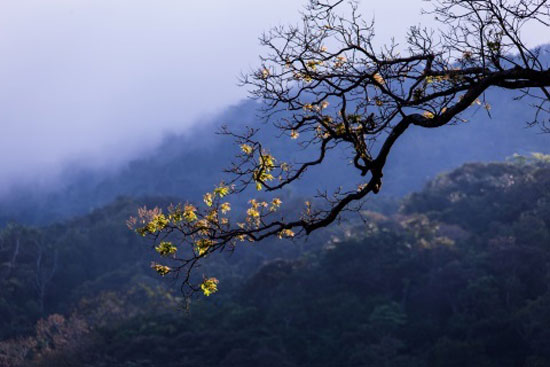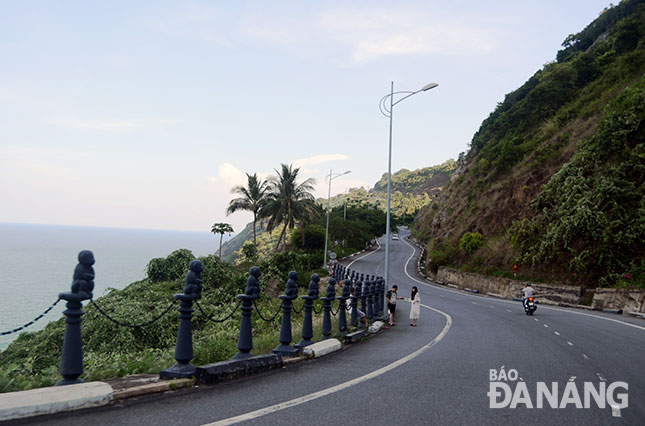Can Son Tra Peninsula become international-level garden for all living beings?
About 10km northeast of Da Nang’s centre, the Son Tra Peninsula is seen as a ‘green lung’ for the city.
 |
| The stunning view of the Son Tra Peninsula |
With its sea-oriented appearance, it also plays a vital role as a wind barrier, and protecting the city during the rainy and stormy season.
This venue was dubbed as a ‘treasure’ with a species-rich animal and plant ecosystem varying from tropical rainforests to coastal reefs.
According to domestic ecologists, the peninsula is now home to a total of 408 species of birds and animals. Of these, 15 are endangered species.
Noticeable, the peninsula is famous for the world’s largest population of the endangered red-shanked douc langur, which has been recognised by the Wildlife at Risk international organisation as the ‘Queen’ of the primate species.
The Son Tra Nature Reserve has been protected under the nationally prohibited forest regime with many rare wild animals.
When summer comes, the Nature Reserve boasts its enchanting scenery thanks to a large number of colourful and fragrant flowers.
Various studies show that the peninsula can generate enough oxygen for more than 4 million people in total.
In terms of ecological balance, the Son Tra forest has the highest level not only in the country but also in the world as a whole, because the coverage rate of the primary and secondary plants has reached 99.9% in total with a density of 5,000 trees per ha.
In particular, the Son Tra Peninsula plays a vital role in ensuring the defence of the northeastern approaches to the inner-city because of its favourable geographical position.
For this point of advantage, the land was once dubbed as ‘the magical eyes of Indochina’.
 |
| A road to the Son Tra Peninsula |
Mr Ho Huy Diem, the former Vice Chairman of the city’s Planning Association, said the Royal Park England, one of the most popular in the world, is home to only about 250 species of trees. In comparison, there are over 1,000 species of plants in the Son Tra Nature Reserve which covers an area of only over 4,000ha.
Mr Hoang Dinh Ba, the former Head of the former Quang Nam- Da Nang Department of Forestry remarked that the Son Tra Peninsula can totally resume its primeval look if effective protection and conservation measures are taken in an effective manner.
Mr Ba underlined the importance of promoting the development of valuable plants with the rooting depth varying widely and extending up to 30m or more below the surface. This is considered a good way to protect underground water sources on the peninsula.
Another special heed should be paid to take solutions to deal with soil erosion and negative factors which might adversely affect the natural habitat and food sources for the red-shanked douc langurs.
Given its species-rich animal and plant ecosystem, the peninsula is totally eligible for becoming an international-level garden for all living beings in the future, and this ambition is within our hands’ reach!